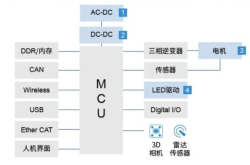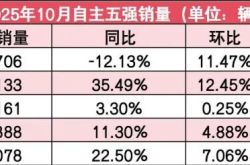Revolutionizing AI Memory: NVIDIA Bets on SOCAMM to Rival HBM
![]() 05/26 2025
05/26 2025
![]() 515
515

In an era marked by exponential growth in computational demand, storage technology is transitioning from a passive role to an active participant. The advent of SOCAMM signifies the first time memory modules have dynamically responded to computational needs. Its synchronous architecture orchestrates data transmission through a unified clock signal, boosting bandwidth to 2.5 times that of traditional DDR5. Additionally, an adaptive adjustment mechanism enables the module to enter energy-saving mode under low loads, reducing power consumption to one-third of similar products. This "intelligent throttling" feature allows SOCAMM to adjust resource allocation in real-time based on model complexity in AI training scenarios, circumventing the inefficiencies of traditional over-provisioned memory.
SOCAMM, or Small Outline Compression Attached Memory Module, is a miniaturized compressed memory module. Currently based on LPDDR5X DRAM chips, SOCAMM adopts a single-sided four-chip pad and three fixed screw hole design, similar to the previous LPCAMM2 module. However, unlike LPCAMM2, SOCAMM lacks a protruding trapezoidal structure, reducing its overall height and making it more suitable for server installation environments and liquid cooling systems.
01
The Dawn of Technology
Developed jointly by NVIDIA, Samsung, SK Hynix, and Micron, this technology leverages LPDDR5X DRAM. With 694 I/O ports (surpassing the 644 of traditional LPCAMM), it boosts data transmission bandwidth to 2.5 times that of traditional DDR5 solutions. Its core innovations are three-fold.
Physically, SOCAMM reimagines traditional memory modules. Measuring just 14×90 mm, it resembles a slender USB flash drive, about the length of an adult's middle finger. Compared to mainstream server memory modules (like RDIMM), SOCAMM reduces volume by about 66%. This compact design not only frees up server space but also enables higher-density hardware deployment. With data centers increasingly adopting liquid cooling systems, SOCAMM's lower profile and flat surface design make it ideal for liquid cooling environments, avoiding heat dissipation inefficiencies and impeding cooling medium flow.
Moreover, SOCAMM breaks the LPDDR memory paradigm of being soldered to the motherboard. Its detachable modular plug-and-play structure allows users to upgrade or replace memory as easily as changing a hard drive or SSD. This shift transforms LPDDR from a "non-replaceable" component, offering systems higher flexibility and maintainability. For enterprises, this means expanding memory capacity or upgrading technology without replacing the entire motherboard, significantly reducing economic costs and operational complexity while extending server platform lifecycles.
Regarding performance and energy efficiency, SOCAMM showcases its advantages as a new generation of high-density memory modules. Based on advanced LPDDR5X DRAM chips, it achieves up to 128GB per module, offering over 100GB/s of bandwidth with a 128-bit bit width and 8533 MT/s data rate. This high performance makes it ideal for tasks requiring high memory throughput, such as AI training, large-scale inference, and real-time data analysis. For instance, when running the ultra-large language model DeepSeek R1 with 671 billion parameters, SOCAMM reduces data loading time by up to 40% due to its outstanding bandwidth. Simultaneously, LPDDR5X's low-voltage design and optimized packaging process significantly reduce power consumption while maintaining high performance, estimated to decrease overall server operating energy consumption by 45%. This balance of high performance and low power consumption makes SOCAMM suitable for both centralized data centers and edge computing scenarios with space and energy constraints.
In terms of technology route, SOCAMM has not followed HBM's (High Bandwidth Memory) path of extreme bandwidth through 3D stacking and Through-Silicon Via (TSV) technology. Instead, it has taken a practical and scalable "middle path." While HBM excels in bandwidth density, its high manufacturing cost, complex packaging, and primary use in advanced GPU or accelerator packaging architectures hinder its widespread adoption in general-purpose server platforms. In contrast, SOCAMM retains nearly 120GB/s of bandwidth while significantly reducing deployment thresholds and manufacturing difficulties through standardized module design and mature packaging processes, offering stronger cost control and broader applications.
This differentiated strategy creates a complementary relationship between SOCAMM and HBM. HBM is ideal for GPU and specialized accelerator integration requiring high bandwidth and low latency, while SOCAMM suits general-purpose computing platforms needing flexible expansion and balanced performance and energy efficiency. Thus, SOCAMM is poised to become a key memory solution in future data centers' diversified computing power architectures, meeting the growing demands of AI and big data processing while considering infrastructure sustainability and operational efficiency improvements.
From a technical perspective, SOCAMM's LPDDR5X technology significantly enhances data transmission rate and energy efficiency compared to traditional DRAM, making it ideal for large-scale parallel computing in AI servers. However, this "compromise route" faces challenges in balancing modularization costs with performance gains. HBM already dominates the high-end GPU market with its stacked design, and for SOCAMM to break through, it must demonstrate its cost-per-performance advantage.
02
Reconstructing the Memory Market
At CES 2025, NVIDIA unveiled the GB10 Grace Blackwell superchip and Project DIGITS, aiming to popularize personal AI supercomputers. According to EBN, SOCAMM is seen as a "next-generation" HBM with superior performance and energy efficiency over traditional DRAM in small PCs and laptops, potentially crucial. Notably, the EBN report hinted that NVIDIA plans to use separate LPDDR in the first "DIGITS" series product and integrate four SOCAMM modules in the next version.
The report emphasizes that unlike SODIMM modules based on DDR4 and DDR5, SOCAMM uses low-power LPDDR5X to improve efficiency and performance. With increased I/O pins, it significantly boosts data transmission speed, crucial for AI computing. These reports also indicate that NVIDIA's push for its memory standard marks a shift from the traditional JEDEC framework, which includes memory giants like Samsung, SK Hynix, and Micron, as well as semiconductor, server, and PC companies like Arm, NXP, Intel, HP, and Honeywell.
SOCAMM's commercialization coincides with a shift in AI computing power demand from centralized cloud centers to edge devices. In NVIDIA's Project DIGITS, SOCAMM's low power enables its installation in desktop devices, offloading trillion-parameter model inference tasks previously requiring data center support to the terminal. This "decentralized" trend births new business models: medical institutions can deploy local medical image analysis systems, manufacturing workshops can process sensor data in real-time, and consumer-grade AR devices can run complex generative AI.
Signs of market reshuffling are emerging. Micron announced that its SOCAMM modules have achieved mass production, directly targeting SK Hynix's HBM4 roadmap.
03
Ripples
SOCAMM's emergence is not just a new node in semiconductor technology evolution but a stone thrown into the industry pond, creating ripples across the supply chain. The storage landscape is reshaping, and HBM technology giants like Samsung and SK Hynix face new challenges. SOCAMM's deep integration with LPDDR drives DRAM manufacturers towards "modular packaging" transformation, while its demand for higher-density wiring processes in substrate materials forces supply chain enterprises like Simmtech to replan their technology routes. Future storage technology competition intensifies between HBM with "stacked innovation" and SOCAMM with "modular reconstruction."
This transformation extends to AI chip design. Traditional GPUs rely on costly, complex-to-cool HBM for high-bandwidth memory, while SOCAMM's modular design finds a new balance between performance and cost. This breakthrough spurs the industry to explore "heterogeneous memory architectures": using HBM for core computing units and SOCAMM for edge inference scenarios, constructing a multi-level storage ecosystem and transforming chip design logic.
Notably, although SOCAMM originated in the server market, its miniaturization reveals potential for the consumer terminal market. Replacing traditional DRAM in PCs, laptops, and mobile devices would significantly improve terminal device energy efficiency, laying a solid hardware foundation for lightweight AI applications. This "cloud-to-terminal" technology penetration will intensify competition among semiconductor enterprises for vertical scenarios.
04
Concerns
Despite high expectations, SOCAMM's commercialization process poses multiple risks. When analyzing SOCAMM's development trajectory using industry models, it appears in a superposition state of technological singularity and commercial game.
While JEDEC has promoted LPCAMM2 as an open standard, SOCAMM's proprietary nature hinders ecosystem adaptability. NVIDIA must invest significantly to persuade third-party vendors (like AMD, Intel) to join its technology alliance; otherwise, SOCAMM will remain limited to its GPU ecosystem. This "closed cost" is evident in the AI chip field, where hyperscale cloud vendors like Meta prefer more compatible CXL or HBM solutions over SOCAMM tied to a single supplier. If NVIDIA fails to close the ecosystem loop by 2027, it may miss the AI hardware iteration window.
R&D prediction model data shows a significant rightward shift in the SOCAMM mass production curve. The planned 2025 launch is now tied to the Rubin architecture GPU development cycle, pushing it back to 2027. System diagnostics reveal that signal attenuation in high-temperature environments, like stubborn algorithm bugs, frequently triggers the data verification module's fuse mechanism. Meanwhile, the yield of 16-die stacked LPDDR5X chips consistently fails to meet deep learning predictions. Micron and SK Hynix's capacity ramp-up data deviates from preset trajectories, forcing NVIDIA to revise the GB300 server motherboard architecture. Like an AI model retuning parameters after data deviations, these design iterations incur sunk costs affecting the entire product matrix.
In the market competition multi-agent game model, SOCAMM faces a three-dimensional pressure field. Traditional memory technologies like DDR5 and GDDR6 continue to occupy market share with mature cost optimization. CXL memory pooling technology, akin to a "decentralized protocol" for computing architecture reconstruction, breaks the strong coupling between memory and CPUs. Geopolitical factors act as external variables, prompting Chinese vendors to accelerate alternatives like XMCAMM, and these "local models'" rapid iteration rewrites global market parameter distributions.
05
Conclusion
SOCAMM's disruptiveness lies not just in technical parameters but in revealing the deep logic of hardware innovation in the AI era: performance breakthroughs must synchronize with ecological control. However, NVIDIA's "standard breakthrough" path is fraught with challenges from traditional forces and practical technology implementation resistance. If SOCAMM overcomes mass production difficulties and builds an open ecosystem, it may become an AI hardware milestone; otherwise, it risks becoming another footnote in a "technological utopia."





